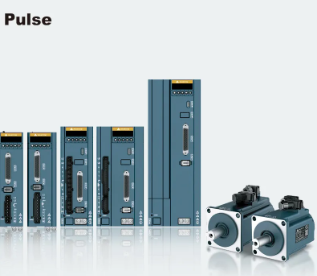Understanding Servo Motors: Definition and Core Function
What Defines a Servo Motor?
Servo motors are basically rotary actuators that give really good control over where something turns, how fast it moves, and how quickly it speeds up or slows down. Most servos fall into two main categories: AC or DC types, depending on what kind of job they need to do. What sets these motors apart from regular ones is their built-in feedback system. This system keeps checking what the motor is doing all the time and makes adjustments so things stay on track. Because of this constant monitoring, servos can handle changing situations without losing their grip on performance standards. That's why we see them everywhere from robotic arms in factories to those fancy CNC machines cutting metal with pinpoint accuracy, plus countless other automated setups where getting things just right matters a lot.
Key Components: Stator, Rotor, and Encoder
To really get how a servo motor delivers such pinpoint control, one needs to understand what makes it tick inside. At the heart of things sits the stator, this isn't just some random part but actually creates the magnetic field needed for everything else to work properly. Then there's the rotor, which spins around thanks to that magnetic field from the stator. It's basically what turns motion into action. Don't forget about the encoder either. This little device takes information about where exactly the rotor is positioned and translates that into electrical signals. These signals tell the system whether everything is running smoothly or if something needs fixing. When engineers keep track of these signals, they can tweak settings so the motor does exactly what it should do. Getting familiar with all these parts helps technicians fix problems faster and improve performance over time. Plus, knowing how all these pieces fit together reveals why servo motors are so advanced compared to regular motors on the market today.
How Servo Motors Work: Mechanics and Control Systems
The Role of Feedback in Precision Control
The feedback systems in servo motors form the basis for accurate control, making sure what comes out matches exactly what was commanded. This matters a lot in situations where getting things right matters most, like manufacturing processes or robotics. Encoders and resolvers are standard tools here, constantly checking for errors and adjusting the motor's performance on the fly. Take a typical setup with a brushed DC motor for example many engineers will install quadrature encoders to create that closed loop system which really tightens up the accuracy. Real world tests back this up pretty well too studies show these feedback loops can boost efficiency somewhere around 30 percent. What this means practically is smoother running equipment that keeps performing consistently no matter what kind of outside factors might be messing with it.
Servo Controllers: Linking Software to Motion
At the heart of many automated systems lies the servo controller, acting like a brain that takes incoming signals and tells motors what to do based on given commands. Today's controllers have come a long way from their basic predecessors, incorporating sophisticated computer algorithms that give them much greater flexibility when handling different tasks. These devices work pretty well with all sorts of software platforms, essentially translating digital instructions into real world movement. We're seeing some interesting developments too with Internet of Things technology being built right into modern controllers. This allows them to talk to other smart devices in the system, creating smarter automation setups across industries. With better microprocessors inside, contemporary controllers not only perform more efficiently but also handle complicated motions without breaking a sweat, making entire mechanical systems more reliable and productive over time.
Types of Servo Motors: AC vs. DC
AC Servo Motors: High Accuracy for Industrial Use
AC servo motors are now pretty much the go-to choice across most industrial settings because they deliver exceptional accuracy and can be trusted day in and day out. These motors handle constant workloads really well, something that makes all the difference in places where machines run nonstop like factories and robotic assembly lines. What sets them apart is how they use those smooth sine waves for power delivery, which means less vibration during operation and puts far less strain on moving parts over time. Take a look at the numbers and it becomes clear why so many manufacturers prefer them these days – somewhere around 60% of the industrial robotics market runs on AC servo tech thanks to how consistently they perform under pressure. As industries continue pushing toward smarter automation solutions, this growing adoption of AC servos just shows how critical precise control has become in modern manufacturing operations.
DC Servo Motors: Historical Applications and Limitations
Compared to AC motors, DC servo motors have a much simpler construction, yet they struggle with speed and torque capabilities. Back in the day, these motors dominated many industrial settings until AC technology started gaining ground. Today, DC servos still pop up in niche applications where simplicity matters more than performance. But let's face it - those brushes inside wear out fast, and at higher speeds, these motors just don't perform well. Maintenance becomes a real headache because of this. For operations needing reliable equipment with little breakdowns, this is a big problem. With AC tech getting better all the time, most manufacturers are moving away from DC servos for anything beyond basic tasks.
Applications of Servo Motors in Modern Technology
Industrial Automation and Robotics
Industrial automation simply wouldn't work without servo motors, which bring a whole new level of precision to manufacturing processes. These motors make sure machines move exactly as intended, something that matters a lot when production lines need to handle different products or adapt quickly to changes. Robotics shops love them because they give robots both speed and accuracy, letting automated arms do complicated jobs that would otherwise require human hands. Take automotive assembly lines for example - servos help robotic arms bolt parts together consistently at speeds no human could match. Some factory managers report seeing productivity jumps around 20% after upgrading their servo systems, which explains why so many manufacturers keep investing in better motor technology despite the initial costs.
Consumer Electronics and Automotive Systems
Servo motors play a big role in consumer electronics, making things work smoothly in all sorts of devices. Take cameras and gaming systems for instance, where getting those exact movements right really matters for how good the product feels to use. These little motors give manufacturers dynamic control over their products, which means better performance across all kinds of gadgets around the house. When we look at cars, servo motors have become pretty standard too. They're used in power steering systems and other automated parts inside vehicles, something that makes driving safer and generally more pleasant. The auto industry is moving fast toward electric vehicles these days, so there's definitely room for servo motors to find even more applications. Car makers are already starting to integrate them into some pretty advanced tech features as they try to squeeze every bit of efficiency out of their designs.
Aerospace and Medical Equipment
Servo motors have become absolutely necessary in aerospace work, especially when it comes to controlling aircraft surfaces and steering mechanisms that keep planes safe and on course. These motors handle the fine balancing act needed during flight, which is why aerospace engineers rely so heavily on them for all sorts of demanding tasks. Beyond flying machines, servo motors also show up in medical robotics, particularly in surgical systems where tiny movements matter a lot. The kind of precise control these motors offer really does make a difference in operating rooms, improving patient results across the board. Surgeons need this level of accuracy for complex procedures, something most experts would confirm after seeing how many lives depend on getting those movements just right in critical situations.
Advantages and Challenges of Servo Motors
Precision, Efficiency, and Energy Savings
Servo motors stand out because they offer really precise control, which is why they're so important in advanced manufacturing setups. What makes them special is how they can make tiny adjustments on the fly something that matters a lot when machines need to move parts with pinpoint accuracy. Look at places like airplane factories or semiconductor plants where even small errors cost big money. These motors save companies money too since they use less power than regular motors. Some research shows factories switching to servos cut down their electricity bills by around 15 to 20 percent over time. That means both cheaper operations and less strain on the environment. With this combination of being super accurate and saving energy, it's no wonder more manufacturers keep turning to servo motors for their production needs these days.
Maintenance Costs and Vibration Concerns
Servo motors come with plenty of benefits but they do have some real headaches when it comes to upkeep and dealing with vibrations. The fancy parts that make them so precise are actually pretty fragile over time, which means higher maintenance bills down the road. Regular checkups become absolutely necessary if companies want to avoid those costly production stoppages. Vibration problems represent another major headache for these motors. When vibrations build up, they really mess with how well the motor works and shorten its lifespan. That's why good vibration control should be part of any maintenance plan from day one. Getting proper technical support makes all the difference in handling these issues. Most manufacturers recommend scheduled inspections every few months to catch small problems before they turn into big ones. Taking care of vibration concerns while keeping up with regular maintenance will go a long way toward preserving the impressive capabilities of these complex machines despite their maintenance demands.
Frequently Asked Questions
What is the main difference between AC and DC servo motors?
AC servo motors are preferred for their high accuracy and reliability in industrial applications, while DC servo motors have a simpler design but are limited in speed and torque performance.
Why are feedback systems important in servo motors?
Feedback systems are crucial because they ensure the motor's output precisely matches the input commands, maintaining high accuracy and efficiency.
In which industries are servo motors most commonly used?
Servo motors are extensively used in industrial automation, robotics, consumer electronics, automotive systems, aerospace, and medical equipment due to their precision and efficiency.
What are some challenges associated with using servo motors?
Challenges with servo motors include maintenance costs due to advanced components and concerns about vibration affecting performance and longevity.

